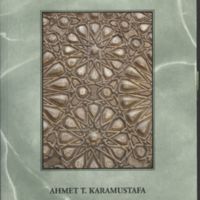Sufism: the Formative Period
Dublin Core
Title
Sufism: the Formative Period
Description
Karamustafa bases this study on a fresh reading of the primary sources and, by integrating the findings of recent scholarship on the subject, presents a unified narrative of Sufism's historical development. His innovative analytical framework reveals the emergence of mystical currents in Islam during the ninth century and traces the rapid spread of Iraq-based Sufism to other regions of the Islamic world, providing an integrated, comprehensive understanding of one of the most compelling aspects of late antique, early medieval Islamic religious history.--From publisher description.
Creator
Ahmet T. Karamustafa
Publisher
Edinburgh : University Press
Relation
Series: New Edinburgh Islamic surveys
Table Of Contents
The Sufis of Baghdad -- Renunciants, the inward turn and the term ṣūfī -- Prominent Sufis of Baghdad -- Major characteristics of the Sufis of Baghdad -- Mystics outside Baghdad -- Lower Iraq: Sahl al-Tustarī -- Iran and Central Asia -- The spread of Baghdad Sufism -- Western Iran and Arabia -- Khurāsān and Transoxania -- Mystics in al-Andalus? -- Specialised Sufi literature -- Sufism among traditionalists -- Sufism in the bosom of fiqh and kalām -- Formation of communities -- The training master and Sufi lineages -- The master as patron and the cult of saints -- Sainthood triumphant -- Social spread and political influence -- Antinomians and nonconformists.
Text Item Type Metadata
Original Format
Book
Citation
Ahmet T. Karamustafa, “Sufism: the Formative Period,” Humanities Hub, accessed December 15, 2025, https://humanitieshub.sdsu.edu/omeka/items/show/1843.

